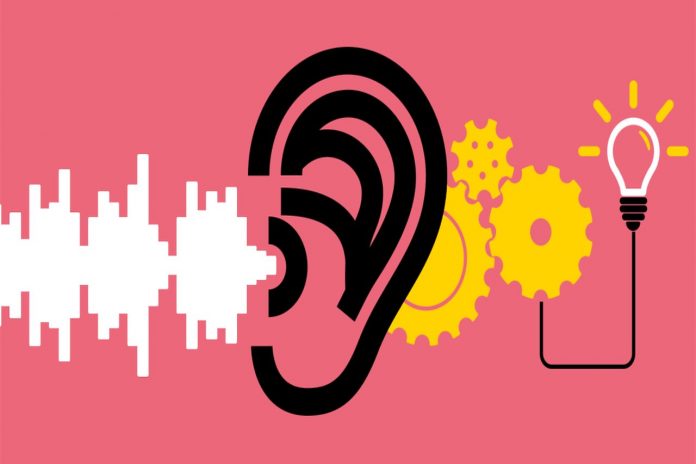You may have overheard your students say: “I love my English classes but when it comes to listening I feel terrified and frustrated!” In fact, this is what many language learners feel or express. But why does this happen?
It could be argued that they frequently consider that improving their listening skills is like memorizing historical data. When they learn a number of dates, events and the like by heart, they can feel that they could take a test about that information and be successful.
Nevertheless, making progress in listening involves more than just memorizing some facts. Listening is a capacity and, because of that, its upgrading depends on a process. In case you want to have a better idea about this method, take a look at the following link from a previous article.
At any rate, one of the implications your students need to consider is that an ability can only be developed in one way: by practicing. It sounds so simple and yet not so many people do it and if they do it, they don’t do it in the right manner.
You may ask your students: “Do you practice listening outside your classroom? If the answer is “no”, you may present the following scenario to them: “You want to be a pilot, so you need to study, among other things, the safety rules. You learn them, and pass the test on that. However, you are not yet ready to fly an airplane. You need a certain number of hours of supervised flying experience to qualify for a pilot’s license. The safety rules are somehow like the vocabulary, grammar structure and knowledge of the topic that you need in order to build sentences; that’s the minimum you have to learn. But in spite of knowing that, you are not ready yet to understand all kinds of audio material. You need at least a certain number of hours of exposure to spoken English in order to begin feeling that you can grasp the meaning of what it is being said. Thus, provided that you practice on your own, additionally to what you do in class, your plane will probably never take off.
If the answer is “yes,” but they still feel that they cannot fully understand or not comprehend enough to feel satisfied with their performance, have them check the following: They already have a schema of how language works in Spanish, a sort of pattern with all the characteristics that this tongue has. For example, Spanish is a syllable-timed language whereas English is a stress-timed language. In the former, every single sound is pronounced; in the latter though, that doesn’t happen. Then, Spanish speakers are expecting to hear every single word and sound and that causes a huge problem. When a native English speaker says: “My sister’s got a terrible teacher. She doesn´t teach her anything.”, a Spanish speaker might hear: “My sisters te robo a t-shirt. She doesn’t teacheranything.” In the first sentence “t-shirt” sounds more logically connected to the verb “steal” (robar) that the Spanish speaker thought he had heard. In the second sentence, a learner may not be aware of word boundaries and how connected speech works in English. Instead of saying “teach her” separately, a native connects the two words and makes them sound like one term, which may lead to confusion since the foreign speaker may not be aware of those differences between the two languages.
Thus, in essence, what they need to do is to get familiar with those characteristics, especially become aware of the differences, so they can apprehend what they are hearing and comprehend the meaning of the message. The only way to do it is by listening to different kinds of audio material such as podcasts, YouTube videos (many of them come with the audio script on the screen), songs, lectures (Tedx, for example), watch films in English, TV shows, TV series, etc.
But just “listening” is not enough, they need to listen to English audio every day and at least an average of two hours (might be more depending on their current level of English). Tell them they should take advantage of any spare time they have, or make the most of the moment when they are doing something else, for instance, driving, having lunch or waiting for something or somebody. It is convenient to listen to the same material as many times as possible, until they can recognize without much difficulty what is being said. Remember, they need to familiarize with the language and build a new schema; and that won’t happen overnight. How many years have they been listening to Spanish? They should not expect to dramatically improve their listening just with an exposure to spoken English of only a few minutes per day. That won’t possibly work!
The type of material to be employed will depend on your students’ current level of English. If they are beginners or pre-intermediate learners, podcasts could be the best. For higher levels, the other sources mentioned above would work best. Deciding what type of material, they will listen to is the first step. The second one will be the amount of time they are going to devote to this endeavor. Third, if they are beginners or pre-intermediate students, they will need to try to match what they hear with what is actually being said. I always suggest listening to the audio material while reading the script to start sounding out the written words. Furthermore, that helps them to get familiar with the way people connect words or sounds, as well as rhythm, and intonation. You may even suggest reading after the speaker or shadowing him trying to imitate his pronunciation, intonation, and rhythm. Recording themselves wouldn’t hurt because that would enable them to recognize better how words, phrases and sentences are supposed to be uttered and how they are actually pronouncing them. Remember that they are sort of reconstructing their schemata, and that needs lots of practice. Moreover, input is a must! They need to become passionate about listening to make sure they can start flying! To the great blue yonder!
Are there any other strategies you have tried to improve your students’ listening skills? Can you share them? Would you challenge them to do something different to find a different result? Let us know the results!
Estimated reading time: 5 minutes, 22 seconds













